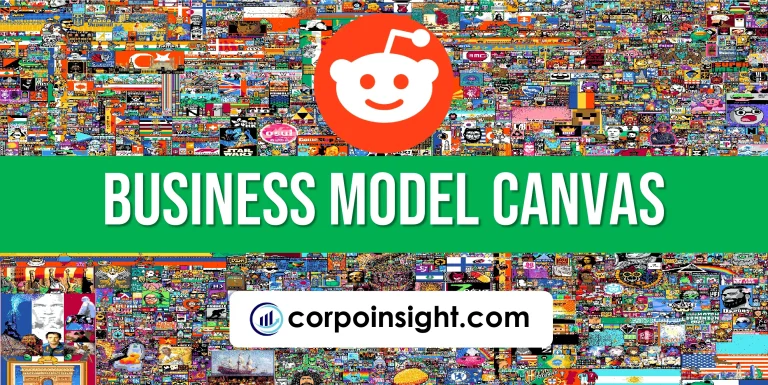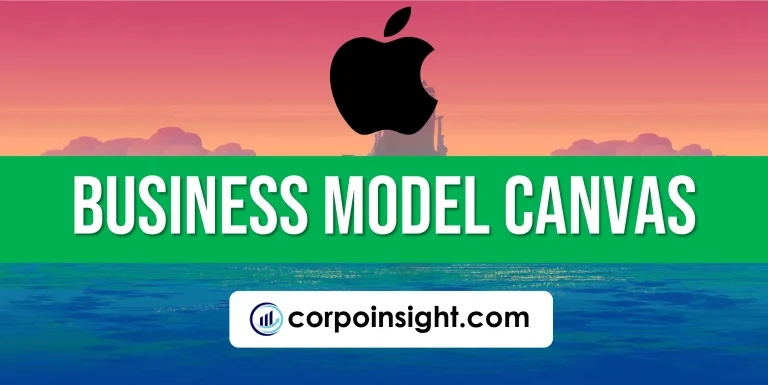Audible Business Model Canvas 2024
With its vast library of audiobooks, exclusive content, and convenient mobile app that enables you to immerse yourself in stories on the go, Audible is the premier destination for book lovers looking to take their reading to the next level through an engaging audio format. In this Audible business model canvas, we will learn about its customer segments, value proposition, revenue streams, channels, customer relationships, key activities, key resources, key partners, and cost structure.
Interesting fact!
The longest audiobook available on Audible is the 86-hour and 33-minute unabridged version of Leo Tolstoy’s War and Peace.
Audible Competitors
Scribd | Kobo Audiobooks | Google Play Audiobooks | Downpour Audiobooks | Audiobooks.com | AudioBooksNow | AudiobookSnow | AudioBooks.com | Hummingbird Audiobooks | Libro.fm
Customer Segments – Audible Business Model Canvas

Commuters and drivers: A major segment for Audible is commuters and drivers who listen to audiobooks during their travel time. Audible reported in 2023 that over 90% of their listeners use the app in the car. The convenience of listening while driving is a major factor for this busy segment.
Book lovers: Avid readers comprise a significant portion of Audible’s base. Audible’s 2023 data shows that the average member listens to 17 books yearly. Audiobooks appeal to book lovers as an easy way to keep “reading” during activities like exercising or cooking when holding a print book is inconvenient.
Subscription service devotees: Audible draws in consumers who love subscription model services. Audible’s credit system allows rollover for unused credits each month, which provides an addicting incentive for subscribers to continuously engage with the platform and get their money’s worth. Surveys show subscribers gravitate toward the credit model over paying per title.
Value Proposition – Audible Business Model Canvas

Accessibility: Audible provides access to an extensive catalogue of audiobooks, exclusive originals, and other audio content that can be instantly downloaded on mobile devices. Over 200,000 audiobook titles were available across genres as of 2023.
Convenience: Audible members can listen anytime, anywhere – on smartphones, Alexa devices, and more. Features like bookmarks and chapter navigation provide an effortless user experience. In 2020, Audible introduced an auto-download setting for easier offline listening.
Cost Savings: With a monthly membership, users get discounted pricing and one free audiobook credit a month, good towards any title, regardless of price. Additional member-only deals offer further savings over à la carte purchases. The average audiobook costs $15-$20.
Revenue Streams – Audible Business Model Canvas

Membership Plans: Audible generates recurring revenue through monthly and annual membership plans that offer credits for audiobook downloads. Plans range from $14.95/month for 1 credit to $22.95/month for 2 credits. In 2023, Audible had over 6 million subscribers.
À La Carte Purchases: Along with membership credits, Audible members can also buy any audiobook title outright if they use all their credits. These direct title purchases represent additional revenue. Popular titles are priced around $20-$30 on average.
Add-on Content Sales: Audible allows members to purchase additional audio content like podcasts, Audible Originals, and audiobook channels focused on specific topics. These represent incremental revenues beyond standard audiobook sales.
Channels – Audible Business Model Canvas

Website and Mobile Apps: Audible reaches customers directly via its account management website and iOS/Android apps for downloading and listening. The apps allow instant access to Audible’s catalogue anytime and anywhere. As of 2023, the apps have been downloaded over 100 million times.
Amazon Integration: As an Amazon company, Audible leverages Amazon’s e-commerce platform to acquire customers. Audible is promoted across Amazon’s sites and integrated with Amazon’s accounts, expanding its visibility. Amazon Prime members can get discounts on Audible.
Social Media Presence: Audible utilizes Facebook and Twitter to increase brand awareness, promote new releases and exclusive content, and engage with book lovers. Its Facebook page has over 2 million followers. Partnerships with influencers also boost social media exposure.
Customer Relationships – Audible Business Model Canvas
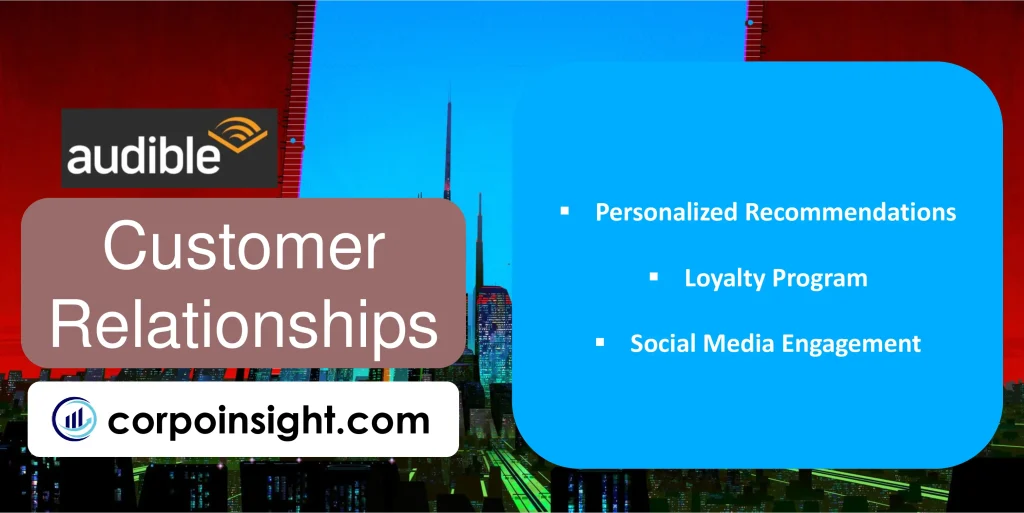
Personalized Recommendations: Using data on users’ listening history and library, Audible employs algorithms to provide customized audiobook suggestions and curated playlists catered to each customer. It nurtures an individualized experience.
Loyalty Program: Audible’s membership loyalty program offers credit rollover for unfinished books and exclusive member-only deals to provide added value for subscribers. It incentivizes retention and engagement. As of 2023, Audible had over 6 million members.
Social Media Engagement: Audible maintains an active social media presence, responding to customer feedback and nurturing its book community online. Its Facebook page boasts over 2 million followers and includes book giveaways and interactive polls.
Key Activities – Audible Business Model Canvas

Content Licencing and Production: Audible licenses audiobook rights from top publishers worldwide. It also produces original audiobooks and audio shows, creating exclusive content. In 2023 alone, Audible released over 13,000 original titles.
Technology Development: Audible continuously updates and improves its website and mobile apps to optimize the user experience. Key focuses include personalization, accessibility, and new feature rollouts like auto-download for offline listening.
Customer Service: Audible provides customer support across phone, email, and social media to address account, technical, and billing issues. It ensures subscribers can easily access assistance when needed. Audible pledges 24/7 support.
Key Resources – Audible Business Model Canvas
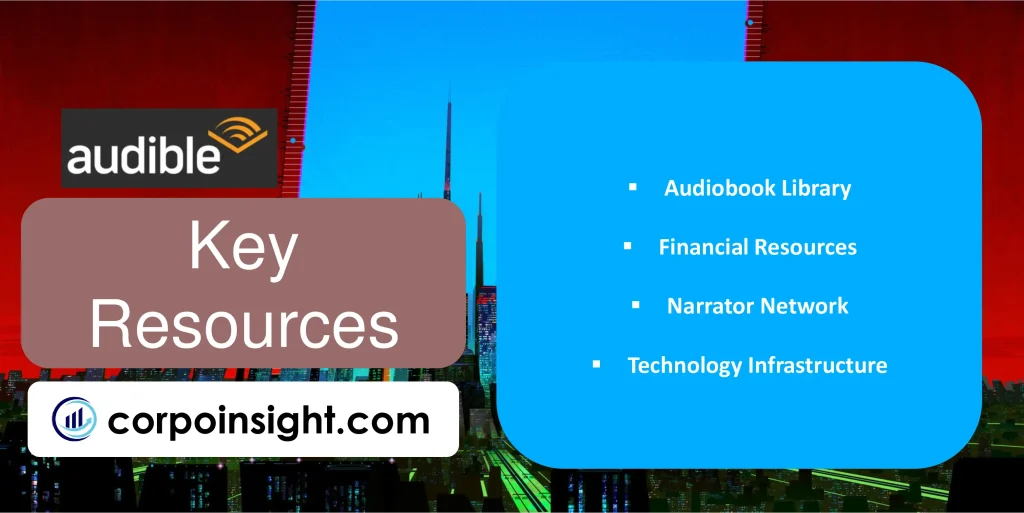
Audiobook Library: Audible’s catalogue of over 200,000 audiobook titles from top publishers is a core asset. Expanding its content library enhances value for customers. Exclusive audiobooks also differentiate Audible.
Financial Resources: Being owned by Amazon provides Audible with substantial financial resources to license content, develop technology, and fund growth initiatives. In 2023, Audible spent over $100 million acquiring audiobook rights.
Narrator Network: Audible has cultivated a community of voice actors to narrate audiobooks. Having talented narrators ensures high audio quality and engaging performances for listeners.
Technology Infrastructure: Audible’s website, apps, personalization algorithms, and cloud servers comprise key infrastructure for delivering audiobooks at scale. Continual development of its platform drives user experience.
Key Partners – Audible Business Model Canvas
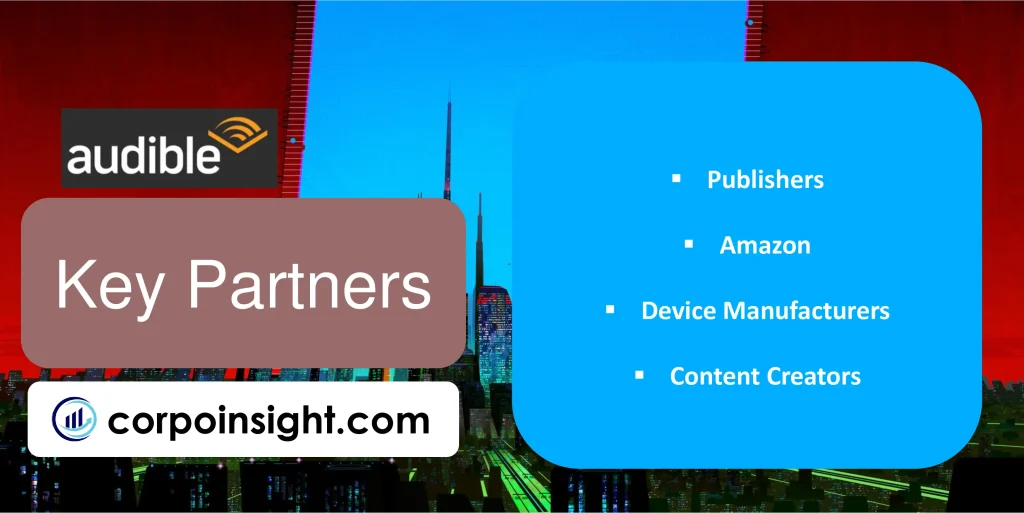
Publishers: Major publishers like Penguin Random House provide much of Audible’s audiobook content library through licensing deals. Publishers are essential for accessing sought-after titles and authors.
Amazon: As Audible’s parent company, Amazon provides resources and support around customer acquisition, cloud infrastructure, and marketing. The integration with Amazon enhances awareness and subscriptions.
Device Manufacturers: Partnerships with Apple, Google, and Amazon enable Audible to have apps readily available across smartphones, tablets, and smart speakers. It boosts accessibility and reach.
Content Creators: Narrators, authors, and producers who create exclusive original programming for Audible to differentiate its catalogue. Content creation partnerships fuel Audible’s audiobook dominance.
Cost Structure – Audible Business Model Canvas

Content Licensing: Audiobook licensing fees paid to publishers represent Audible’s largest cost. Licensing provides access to popular titles and authors that attract subscribers. Audible spent over $100 million on content in 2023.
Platform Hosting: Audible incurs cloud computing and hosting costs to store its audiobook library and operate its website and apps at scale. Advanced infrastructure is essential for supporting services.
Customer Service: Providing 24/7 customer support across multiple channels requires significant staffing and systems for ticketing and tracking. But quality service is vital for retention.
Marketing: As a subscription service, Audible invests substantially in advertising, promotions, and partnerships to attract new customers. Marketing drives awareness and subscriber growth.
Summary of Audible Business Model Canvas
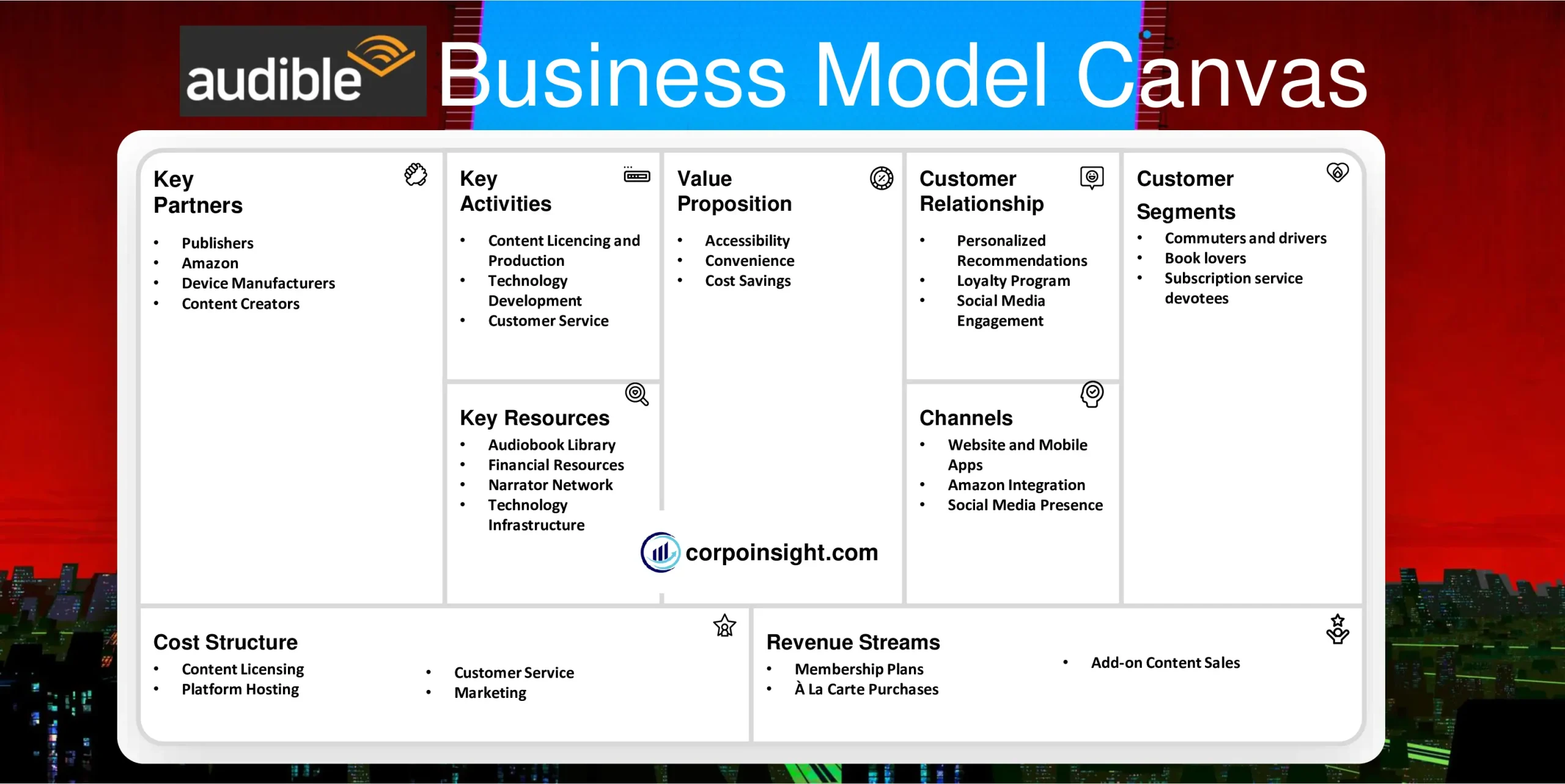
Conclusion on Audible Business Model Canvas
Audible’s business model leverages its vast audiobook library, strategic Amazon partnership, and technical capabilities to provide an engaging platform for book lovers. Its membership-driven approach and effective customer acquisition and retention strategies have enabled Audible to become a premier audiobook service with over 6 million subscribers who value convenience and choice in their audio content. Audible continues optimizing its offerings to deepen customer relationships.

This is Ahsanul Haque, someone very passionate about digital marketing, SEO, and Data Analytics and founder of the Analytics Empire and currently pursuing my major in marketing at Bangladesh University of Professionals.


